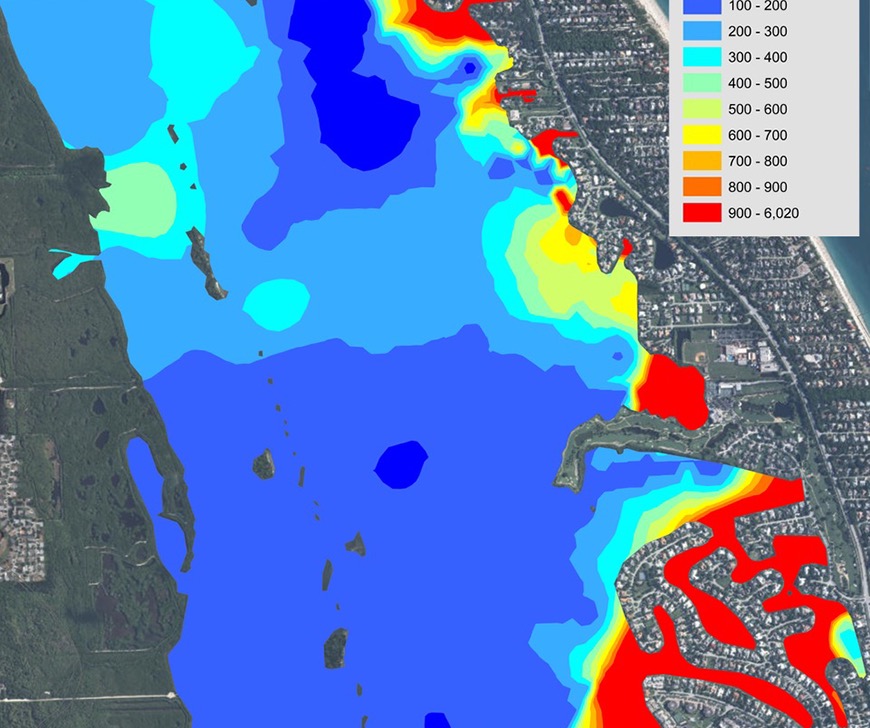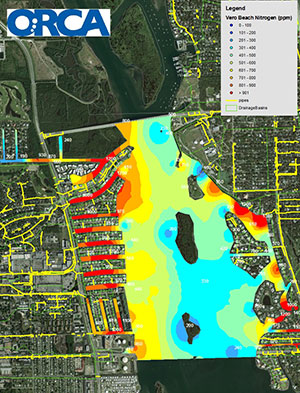ECOTOXICITY PROGRAM
Sediment toxins remain a significant and unmeasured component of the health of the ecosystem.
In response, ORCA has developed a unique Ecotoxicity program.
The first step is to locate the sinks – areas where pollution accumulates in the sediments. Because sediments have a natural affinity for pollutants and because contaminants often have a much longer residence time in the sediments than the water, the best indicator of local water pollution problems often lies on the bottom.
ORCA’s Ecotoxicity program uses a broad-spectrum bio-assay to analyze sediment samples to determine the amount of contaminants in a given sample. The amount of light emitted by a known concentration of bioluminescent bacteria exposed to the sample is inversely related to the toxicity of the sample. When the toxicity levels determined in this manner are mapped based on collection location, a visual representation of high toxicity values cluster together at sinks – the location where the contaminated sediments accumulate. We also routinely test sediment samples for some of the most common, and concerning, pollutants including heavy metals and glyphosate. Finally, we test all samples for nitrogen, phosphorus and sulfur.
Much of the toxicity in the lagoon is associated with muck accumulation. Muck binds toxicants such as heavy metals, but it is also a source of hydrogen sulfide, produced by bacteria as they decompose organic matter in an oxygen poor environment. Hydrogen sulfide is as toxic as cyanide. It interferes with aerobic respiration, which means muck is literally smothering life in the lagoon. ORCA is investigating methods of mitigating muck accumulation as well as developing protocols for identifying other toxicants residing in the muck.
Making Pollution Visible
ORCA’s vision is that if pollution can be made visible we can see where it is entering our water ways and how it is accumulating in our ecosystems and work together to stop it at its source. We can also see which measures are working and which aren’t. A case in point is the map here that resulted from our Map-A-Mile Project. It shows total nitrogen in parts per million. High nitrogen is shown in red and low nitrogen in blue. The amount of red in this map is disturbing because high nitrogen can lead to algae blooms, reduced transparency and diminished fish populations. The most striking thing about this map is the high nitrogen accumulation in all the finger canals except for those associated with the Vero Beach Country Club, in the upper left hand corner, where they have been using best practices for lawn maintenance. The take home message is that it is possible to have a beautiful green lawn without over-fertilizing the Indian River Lagoon. Learn what you can do.
Stopping Pollutants
On its own this information will identify regions of high toxicity and nutrient accumulations, but will not indicate the source of the pollution. To meet that challenge, ORCA has developed a low-cost marine ecosystem monitoring network called the ORCA Kilroy, which uses state-of-the-art sensors to continuously measure an array of water quality parameters- speed, direction, temperature, salinity, depth, turbidity and prevalence of key micro-organisms- streaming that data via cellular signals and web-based interfaces twenty-four hours per day. Kilroy uses 21st century technology to provide instantaneous data, enabling conservation and enforcement managers with the critical information they need to achieve their mission of healthy coastal environments.

The Ecotoxicity program data allows researchers to begin analyzing the potential causes of pollution, for example the mapped data above shows, interestingly, the samples collected around the Moorings Golf Course had the lowest relative toxicity and nutrients compared to all other samples along the eastern boundary. This may be due in part to the fact that the course has been a certified member of The Audubon Cooperative Sanctuary Program (ACSP) for Golf Courses since February 2014 and the shoreline is comprised of mangroves instead of the bulkheads that are common to so much of that shoreline.

